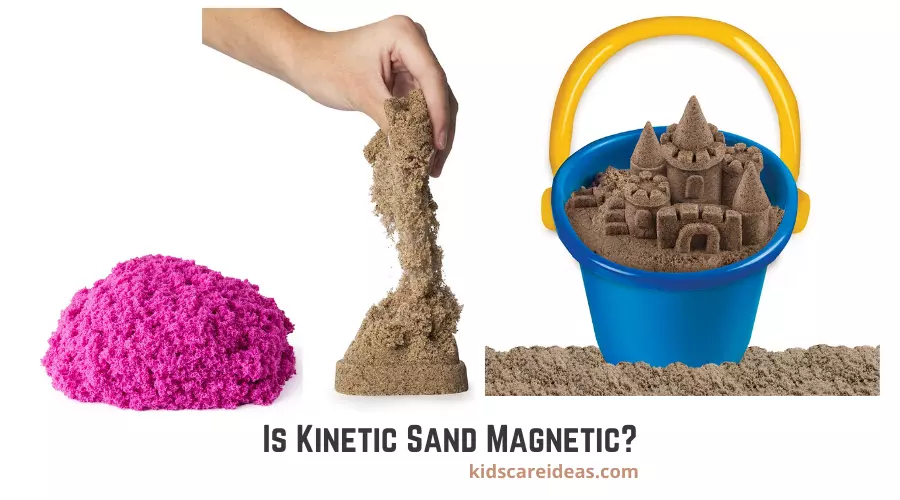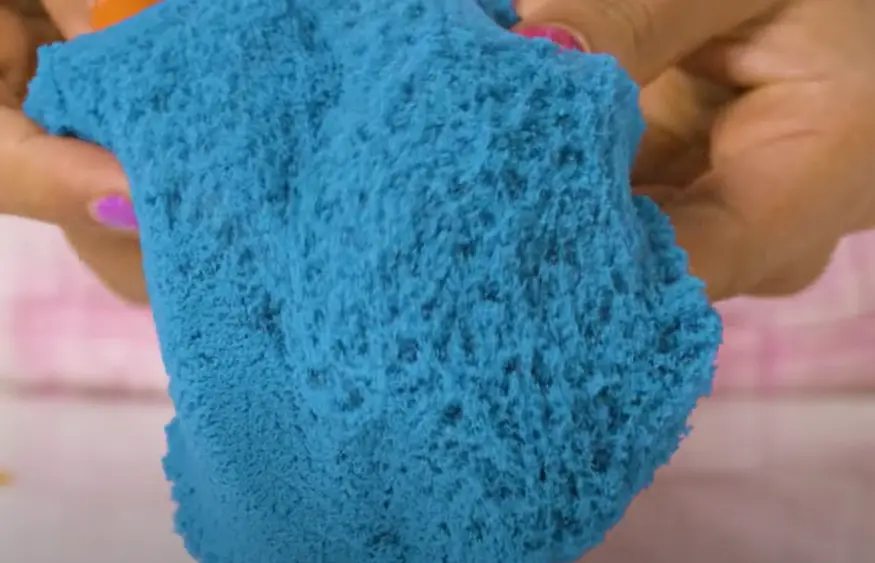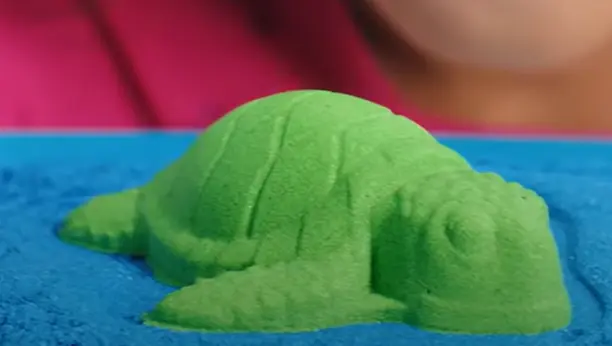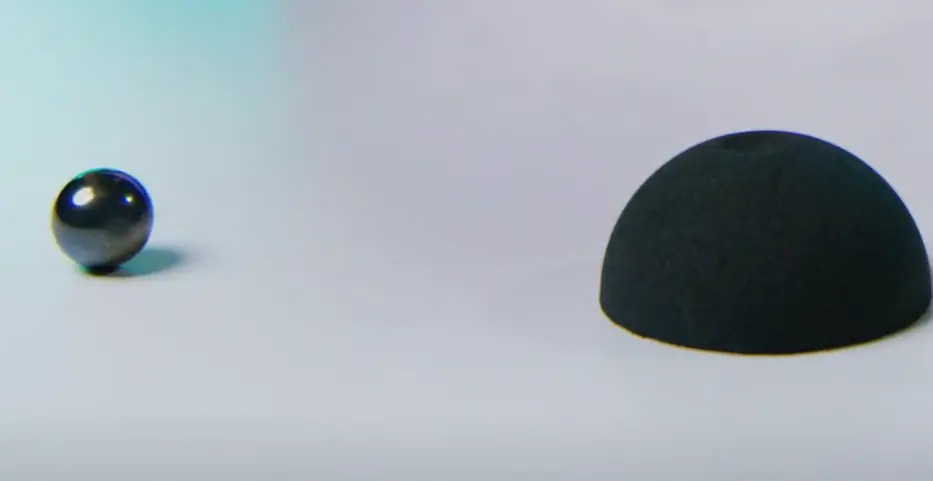Kids love playing with Kinetic sand as it easily sticks to itself and can be squished, molded and made into any shape.
But are they magnetic? In this post, I discussed this in detail about this answer, its composition, and the science behind it.

Let’s get started!
Is Kinetic Sand Magnetic?
No, Kinetic sand is not Magnetic. It is made of non-magnetic substances, ultra fine grain sand and polydimethylsiloxane which is silicon based polymer.

If you keep magnetic pieces near it, it neither attracts nor repel them.
What is Kinetic Sand Made Of?
Kinetic Sand is Made of a mixture of 98% ultra fine grain sand and 2% polydimethylsiloxane(also known as dimethicone).
The ingredient polydimethylsiloxane is actually silicone oil. Also, the sand used in kinetic sand has very fine grains unlike regular sand.
| Ingredient Name | Chemical Formula | Percent Amount |
| Ultra Fine Grain Sand | SiO2 | 98% |
| Polydimethylsiloxane(also known as PDMS or dimethicone) | CH3[Si(CH3)2O]nSi(CH3)3 | 2% |
Why is Kinetic Sand Not Magnetic?
Kinetic sand does not attract or repels when it is taken near magnets. It does not show any magnetic property in it.
Also, it does not have any metallic particles in it.
What does Kinetic Sand stick to?
Kinetic Sand only sticks to itself. It does not stick to anything else.
So, even if you have spilled kinetic sand on the floor or mat, it will be easy to clean. Just you need to make a kinetic sand ball to pick up the rest of the kinetic sand.
What holds Kinetic Sand together?
The polydimethylsiloxane(PDMS) in Kinetic Sand is a silicone polymer that has long chains holding Kinetic Sand together.
PDMS being a silicon polymer acts as both a liquid and a solid due to its special properties.

If you put pressure on Kinetic Sand , the polydimethylsiloxane polymer molecules stick together and it is the thing that allows you to shape it.
But once you release the pressure, these polymer molecules slowly move apart, and sand flattens out.
Science Experiment With Kinetic Sand and Magnets
We will need the following materials:
- A small amount of kinetic sand
- A magnet

Here are the Steps to perform to do the experiment:
- Place Kinetic sand flat on the top of the table.
- Next, you need to bring a piece of magnet near the kinetic sand.
- Observe, whether kinetic sand attracts or repels the magnet.
Expected Outcome: Magnet has no effect on the kinetic Sand as it is not made from any magnetic material.
Science Explanation: Its ingredients are 98% sand which is not magnetic and also another component 2% polydimethylsiloxane (PDMS) is not magnetic too.
I encourage you all to try this magnet experiment with Kinetic sand. It’s much fun doing this.
